
Thomas Francis Meagher
Thomas Francis Meagher (August 3, 1823 – July 1, 1867) was an Irish nationalist, a Union Army…
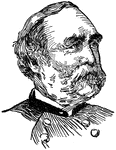
Montgomery Cunningham Meigs
Montgomery Cunningham Meigs (May 3, 1816 – January 2, 1892) was a career United States Army officer,…
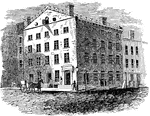
Fraunces Tavern
In August of 1775, Americans took possession of cannons from the Battery at the tip of Manhattan and…
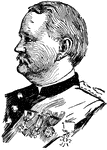
Wesley Merritt
Wesley Merritt (June 16, 1836 – December 3, 1910) was a general in the United States Army during…

Washington Resigning His Commission
At Fraunces Tavern on December 4, Washington formally bade his officers farewell and on December 23,…

General Taylor's attack on Monterey
Taylor's forces left Camargo at the end of August and launched an attack on Monterey on 21 September…
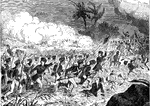
Battle of Churubusco
The Battles of Churubusco took place on August 20, 1847, in the immediate aftermath of the Battle of…
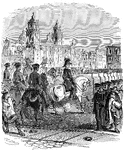
General Scott's Entry into Mexico City
General Scott's entry into Mexico City following victory in the attack on Chapultepec.

Battle of Missionary Ridge
The Battle of Missionary Ridge included in the Third Battle of Chattanooga was fought November 23–25,…
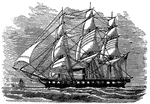
The Hartford
USS Hartford, a sloop-of-war, was the first ship of the United States Navy named for Hartford,…

General Lyon's March to Booneville
The Battle of Booneville was a skirmish of the American Civil War, occurring on June 17, 1861, in Cooper…
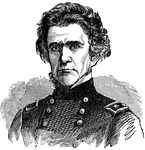
Ormsby McKnight Mitchel
Ormbsy MacKnight (or McKnight) Mitchel (July 20, 1805 – October 30, 1862) was an American astronomer…

Opening of the Battle of Mobile Bay
The Battle of Mobile Bay was a naval battle fought on August 5, 1864, during the American Civil War.

Capture of Fort Morgan, Mobile Bay
The Siege of Fort Morgan occurred during the American Civil War as part of the battle for Mobile Bay…
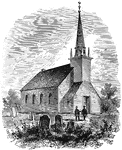
Mohawk Church
Her Majesty's Royal Chapel of the Mohawks, the oldest church in Ontario, is one of six Royal chapels…
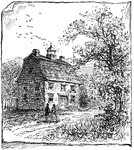
Old Monmouth Courthouse
The Battle of Monmouth was an American Revolutionary War battle fought on June 28, 1778 in New Jersey.…

Battleground at Monmouth
The Battle of Monmouth was an American Revolutionary War battle fought on June 28, 1778 in New Jersey.
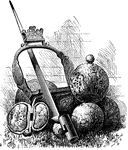
Relics of the Battle of Monmouth
The Battle of Monmouth was an American Revolutionary War battle fought on June 28, 1778 in New Jersey.

John Berrien Montgomery
John Berrien Montgomery (1794 – 25 March 1872) was an officer in the United States Navy who served…

John Bassett Moore
John Bassett Moore (December 3, 1860 – November 12, 1947) was an American authority on international…

John Hunt Morgan
John Hunt Morgan (June 1, 1825 – September 4, 1864) was a Confederate general and cavalry officer…
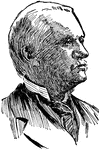
John Tyler Morgan
John Tyler Morgan (June 20, 1824 – June 11, 1907) was a general in the Confederate States Army during…

Samuel Finley Breese Morse
Samuel Finley Breese Morse (April 27, 1791 – April 2, 1872) was an American painter of portraits…

Oliver Perry Morton
Oliver Hazard Perry Throck Morton (August 4, 1823 – November 1, 1877) was a U.S. Republican Party…
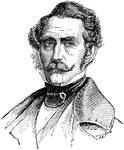
William G Morton, MD
William Thomas Green Morton (August 9, 1819 - July 15, 1868) was an American dentist and physician.
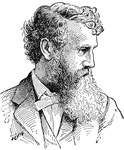
John Muir
John Muir (April 21, 1838 – December 24, 1914) was a Scottish-born American naturalist, author,…

Battle of Murfreesboro
The Battle of Stones River or Second Battle of Murfreesboro (in the South, simply the Battle of Murfreesboro),…
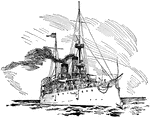
United States Protected Cruiser USS Olympia
USS Olympia was a protected cruiser in the United States Navy during the Spanish-American War.

The School-Ship USS Sabine
The first USS Sabine was a sailing frigate built by the United States Navy in 1855.

General Anthony Wayne's Gold Medal (Front)
Anthony Wayne (January 1, 1745–December 15, 1796) was a United States Army general and statesman.…
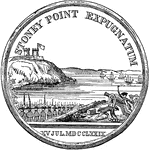
General Anthony Wayne's Gold Medal (Back)
Anthony Wayne (January 1, 1745–December 15, 1796) was a United States Army general and statesman.…

Fort Wayne
Fort Wayne was established 1839 in Indian Territory by Lt. Col. R.B. Mason of the 1st Dragoons. Named…

Mason Locke Weems
Mason Locke Weems (October 11, 1756 – May 23, 1825), generally known as Parson Weems, was an American…
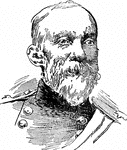
Joseph Wheeler
Joseph Wheeler (September 10, 1836–January 25, 1906) was an American military commander and politician.…
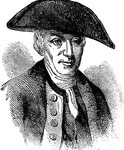
Abraham Whipple
Abraham Whipple (26 September 1733 – 27 May 1819) was an American revolutionary naval commander.…
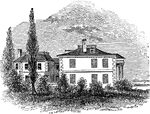
Morris-Jumel Mansion
The Morris-Jumel Mansion, located in historic Washington Heights, is the oldest house in Manhattan.…

The Draft Riots - The Rioters and the 7th Regiment
The New York Draft Riots (July 11 to July 16, 1863), were violent disturbances in New York City that…

Troops Landing at Newbern
The Battle of New Bern was fought on 14 March 1862, near the city of New Bern, North Carolina, as part…

"The Temple," Newburg
With the Newburgh Addresses was privately circulated a notification of a meeting of officers at a large…

Washington's Headquarters at Newburg
The headquarters of George Washington at Newburg during the Revolutionary War.
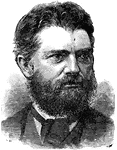
Simon Newcomb
Simon Newcomb (March 12, 1835 – July 11, 1909) was a Canadian-American astronomer and mathematician.
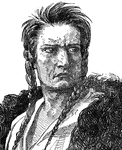
Chief Joseph
Chief Joseph (March 3, 1840 – September 21, 1904) was the chief of the Wal-lam-wat-kain (Wallowa)…
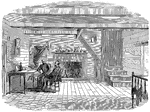
Johnston's Surrender
In light of overwhelming enemy strength and the relatively heavy casualties his army suffered in the…
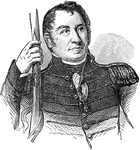
John Stricker
John Stricker (1758-1825) was a Maryland militia officer who fought in both the American Revolutionary…
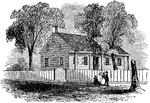
Jacob Purdy House
The Jacob Purdy House was used as General George Washington's headquarters in 1778 and possibly in 1776…
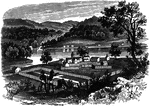
Fort Harmar
The Treaty of Fort Harmar was an agreement between the United States government and several Native American…

Chatterton's Hill, From the Railway Station
While Washington was inspecting the terrain, seeing where it was best to station his troops, he ran…
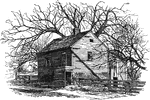
General Putnam's Land Office at Marietta
General Putnam's land office at Marietta during the American Revolution.

Edward Otho Cresap Ord
Edward Otho Cresap Ord (October 18, 1818 – July 22, 1883) was the designer of Fort Sam Houston,…
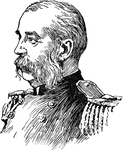
Elwell Stephen Otis
Elwell Stephen Otis (1838 - 1909) was a United States of America General who served in the Philippines…
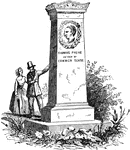
Paine's Monument
The monument in honor of Thomas Paine, the author, revolutionary, and intellectual of the American Revolution.
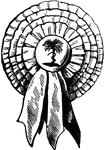
Palmetto Cockade
Ornaments made of blue silk ribbon with a button in the center bearing the image of a palmetto tree.…
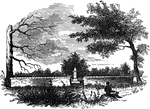
Paoli Monument
The Battle of Paoli (also known as the Battle of Paoli Tavern or the Paoli Massacre) was a battle in…
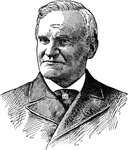
Francis Parkman
Francis Parkman (September 16, 1823 – November 8, 1893) was an American historian, best known…
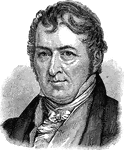
Eli Whitney Jr.
Eli Whitney (December 8, 1765 – January 8, 1825) was an American inventor best known as the inventor…
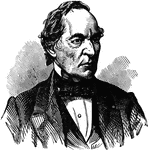
Robert Patterson
Robert Patterson (January 12, 1792 – August 7, 1881) was a United States major general during…
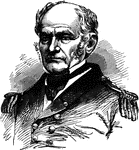
Hiram Paulding
Hiram Paulding (December 11, 1797 – October 20, 1878) was a Rear Admiral in the United States…

John Paulding
John Paulding (16 October 1758 – 18 February 1818) was a militiaman from the state of New York during…
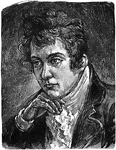
John Howard Payne
John Howard Payne (9 June 1791 - 10 April 1852) was an American actor, playwright, author and statesman.…
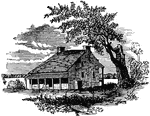
The Billop House
The Conference House (also known as the Bentley Manor and the Captain Christopher Billop House)was built…